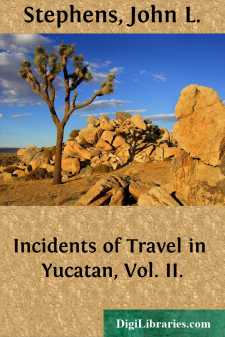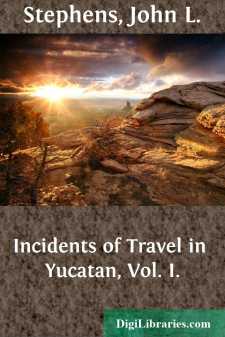Categories
- Antiques & Collectibles 13
- Architecture 36
- Art 48
- Bibles 22
- Biography & Autobiography 813
- Body, Mind & Spirit 142
- Business & Economics 28
- Children's Books 17
- Children's Fiction 14
- Computers 4
- Cooking 94
- Crafts & Hobbies 4
- Drama 346
- Education 46
- Family & Relationships 57
- Fiction 11829
- Games 19
- Gardening 17
- Health & Fitness 34
- History 1377
- House & Home 1
- Humor 147
- Juvenile Fiction 1873
- Juvenile Nonfiction 202
- Language Arts & Disciplines 88
- Law 16
- Literary Collections 686
- Literary Criticism 179
- Mathematics 13
- Medical 41
- Music 40
- Nature 179
- Non-Classifiable 1768
- Performing Arts 7
- Periodicals 1453
- Philosophy 64
- Photography 2
- Poetry 896
- Political Science 203
- Psychology 42
- Reference 154
- Religion 513
- Science 126
- Self-Help 84
- Social Science 81
- Sports & Recreation 34
- Study Aids 3
- Technology & Engineering 59
- Transportation 23
- Travel 463
- True Crime 29
Incidents of Travel in Yucatan, Vol. II.
by: John L. Stephens
Description:
Excerpt
On the twenty-fourth of January we left Nohcacab. It was a great relief to bid farewell to this place, and the only regret attending our departure was the reflection that we should be obliged to return. The kindness and attentions of the padrecito and his brother, and, indeed, of all the villagers, had been unremitted, but the fatigue of riding twelve miles every day over the same ground, and the difficulty of procuring Indians to work, were a constant source of annoyance; besides which, we had a feeling that operated during the whole of our journey: wherever we were taken ill we became disgusted with the place, and were anxious to leave it.
We were setting out on a tour which, according to the plan laid out, embraced a circuit of ruins, and required us to revisit Nohcacab, although our return would be only to make it a point of departure in another direction.
In consequence of this plan we left behind all our heavy luggage, and carried with us only the Daguerreotype apparatus, hammocks, one large box containing our tin table service, a candlestick, bread, chocolate, coffee, and sugar, and a few changes of clothing in pestaquillas. Besides Albino and Bernaldo we had a puny lad of about fifteen, named Barnaby, a much smaller pattern than either of the others, and all three together were hardly equal in bulk to one fairly developed man.
We were all provided with good horses for the road. Mr. Catherwood had one on which he could make a sketch without dismounting; Dr. Cabot could shoot from the back of his. Mine could, on an emergency, be pushed into a hard day's journey for a preliminary visit. Albino rode a hard-mouthed, wilful beast, which shook him constantly like a fit of the fever and ague, and which we distinguished by the name of the trotter. Bernaldo asked for a horse, because Albino had one, but, instead of riding, he had to put a strap across his forehead and carry his own luggage on his back.
We were about entering a region little or not at all frequented by white men, and occupied entirely by Indians. Our road lay through the ruins of Kabah, a league beyond which we reached the rancho of Chack. This was a large habitation of Indians, under the jurisdiction of the village of Nohcacab. There was not a white man in the place, and as we rode through, the women snatched up their children, and ran from us like startled deer. I rode up to a hut into which I saw a woman enter, and, stopping at the fence, merely from curiosity, took out a cigar, and, making use of some of the few Maya words we had picked up, asked for a light, but the door remained shut. I dismounted, and before I had tied my horse the women rushed out and disappeared among the bushes. In one part of the rancho was a casa real, being a long thatched hut with a large square before it, protected by an arbour of leaves, and on one side was a magnificent seybo tree, throwing its shade to a great distance round.
On leaving this rancho we saw at a distance on the left a high ruined building standing alone amid a great intervening growth of woods, and apparently inaccessible. Beyond, and at the distance of four leagues from Nohcacab, we reached the rancho of Schawill, which was our first stopping-place, on account of the ruins of Zayi in its immediate neighbourhood. This place also was inhabited exclusively by Indians, rancho being the name given to a settlement not of sufficient importance to constitute a village. The casa real, like that at Chack, was a large hut, with mud walls and a thatched roof. It had an open place in front about a hundred feet square, enclosed by a fence made of poles, and shaded by an arbour of palm leaves....



